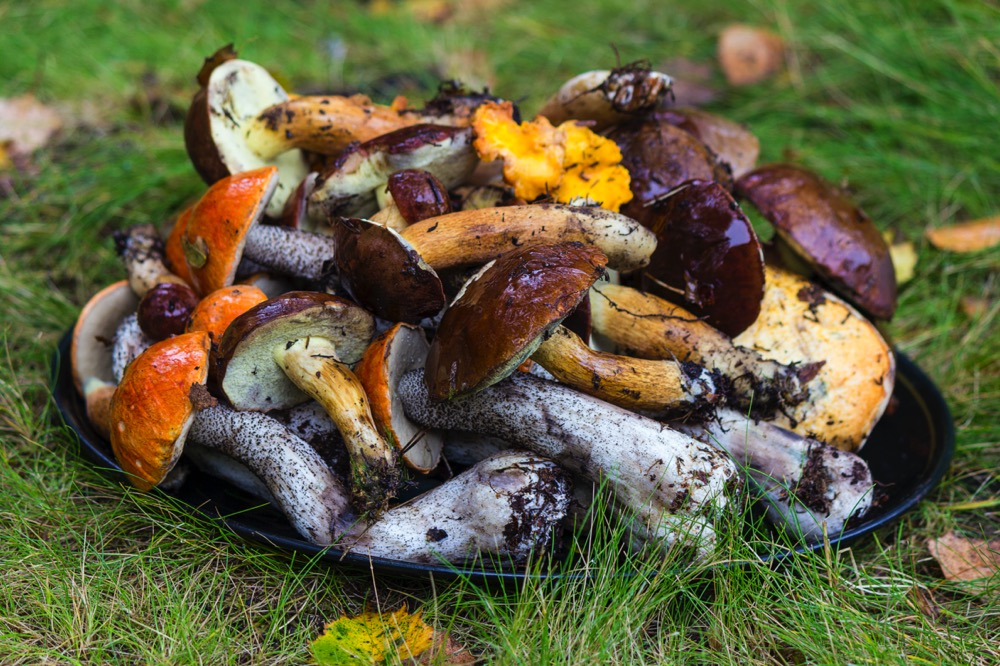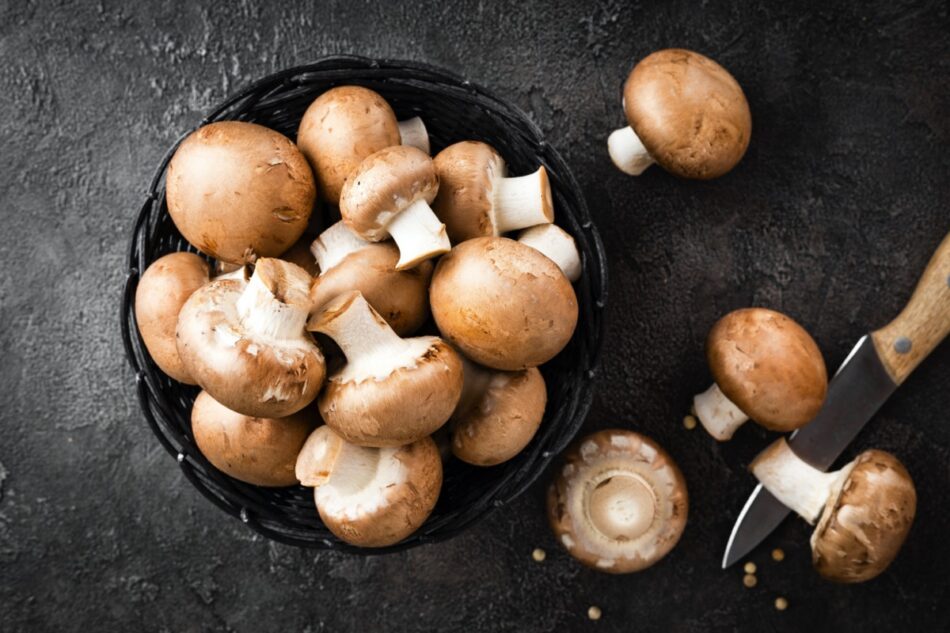When fall comes, avid mushroom pickers get ready for their ventures into the woods, while chefs plan dishes with mushrooms in the comfort of their homes.
The brief season when mushrooms can be picked allows us all to enjoy their delicious taste. But if we freeze them, we can reach for it all year round!
Although dried mushrooms are undeniably delicious, it’s freezing that allows us to enjoy their taste and form. When dried, they, unfortunately, lose their shape. If we want them to be not only tasty but also presentable, it’s important to freeze them properly.
Are all mushrooms good for freezing?
Yes, the majority of them!
Forest mushrooms can be frozen in whole or cut into pieces.
Bay, larch, and birch boletes, porcini, boletus, chanterelles, saffron milkcaps, parasol mushrooms, chevalier mushrooms, and even portobello mushrooms handle low temperatures very well.
In fact, there are only three types of mushrooms that can’t be frozen: tooth jelly fungi, guepinias, and giant puffballs. None of these are particularly popular among mushroom pickers, though.
It’s worth remembering that in the case of mushrooms, time is of the essence. The sooner they are frozen from the moment they were picked up, the better for their shape and taste! It’s because of their flimsy nature – they contain a lot of water and enzymes that break down proteins and sugars. That means their condition starts to deteriorate the very moment they are put in a basket, so it’s best to prep them for freezing as soon as possible!
How to freeze mushrooms properly – preparation
Where to start to ensure the best result possible?
Start with the same step that applies to all other types of frozen food: from selecting the best mushrooms.

This step will spare you disappointment when your mushrooms are thawed; if done carefully, you can expect great results. A good practice is to cut into the mushroom’s stem – this simple action allows you to evaluate its overall condition and decide if it can be used for freezing.
You can only freeze healthy mushrooms – if you see one that’s soft, rotten, or wormy, use it right away or throw it out.
If you store your porcini or slippery jacks improperly (in a plastic bag or a container), they may start to release toxic substances and will go bad fast.
Another important step is cleaning. Mushrooms shouldn’t be washed with water; it’s much better to clean them with a brush or a paper towel that lets you reach the tiniest spots. If need be, you can also use a damp cloth.
If washing with water is necessary, make sure to dry your mushrooms well before freezing. Place them on a strainer first, and then on paper towels. That way you’ll get rid of moisture quickly.
Blanching mushrooms before freezing
Mushrooms with broad gills are best when blanched before freezing. It’s enough to put them in boiling, salty water for 10 minutes and dry them on paper towels which help get rid of moisture fast.
Blanching is also great for reducing the space the mushrooms are going to take in your freezer. Once blanched, your mushrooms will shrink significantly, allowing you to save some space!
Chanterelles and saffron milkcaps must always be blanched. Otherwise, they will become bitter, spoiling your food. You’ll then have to get rid of the entire portion of frozen mushrooms.
Boleti are best when cut into large slices for freezing. Prepped this way, they will be pretty effective both in a soup and as an addition to other dishes. Especially if you cut them so that the stem and the cap remain connected.
If you’re dealing with slippery jacks, make sure to remove their skin to get rid of the characteristic slime that is also not very tasty.
Saffron milkcaps are usually frozen in whole, but it’s recommended to cut their stem short beforehand.
Similarly with bay boletes and porcini – it’s best to freeze them in whole and only slice the largest ones.
Prepping mushrooms for freezing
The equipment we have on hand is important. If you put your mushrooms in an upright freezer that can reach very low temperatures, you can freeze your mushrooms when they’re still raw.
It’s safest, though, to treat them to some sort of heat, for example frying them on clarified butter. Fry denser mushrooms (boleti, bay boletes) for approximately 15 minutes and softer ones (slippery jacks, saffron milkcaps, chanterelles) – for approximately 10 minutes.
Make sure each individual piece is fried on all sides. If you’re frying whole caps, place them on a pan upside down (bottom up), enabling the water to evaporate. This step will help preserve the mushroom’s taste and shape.
What to use to freeze mushrooms in?
Mushrooms can be frozen in containers and plastic bags. As is the case with fruits and vegetables, it’s recommended to pre-freeze them on boards first, and only then put them in a bag or container for proper freezing. That way the mushrooms won’t stick to one another and their shape will remain unaltered.
Before freezing, think about the meals you intend to prep with your mushrooms. Ones that will be used in soups can be cut into cubes or smaller pieces, whereas bigger boleti can be left in thicker slices.

Smaller mushrooms can be frozen in whole.
Such a system will also make the meal prepping much easier – you’ll be able to take the exact amount and shape you need for a given meal, without the need to thaw the rest of the mushrooms.
If you pick and freeze many types of mushrooms, remember to label the bags once you put the mushrooms in. Note the name and the date when the portion was prepped.
How long can frozen mushrooms be stored for?
Some say that you can keep your mushrooms frozen for up to a year, although it’s recommended to use them in 6 months from the moment they were put in the freezer.
Only mushrooms that were exposed to some sort of heat treatment can be stored for a year safely.
It’s best to store your mushrooms at -18 degrees Celsius.
Once you decide to prepare some frozen mushrooms, remember that you don’t really need to thaw them! You can put them, still cold, directly in a pot or a pan to prepare your dish with these forest treasures.
If your mushrooms were thawed, do not freeze them again. Eating mushrooms that were re-frozen may be detrimental to your health!

